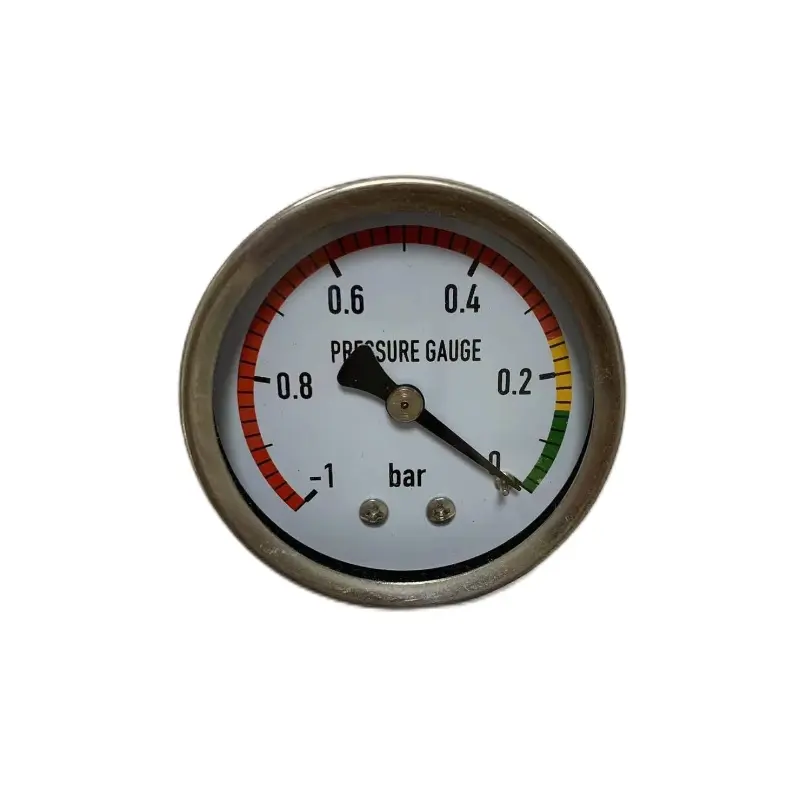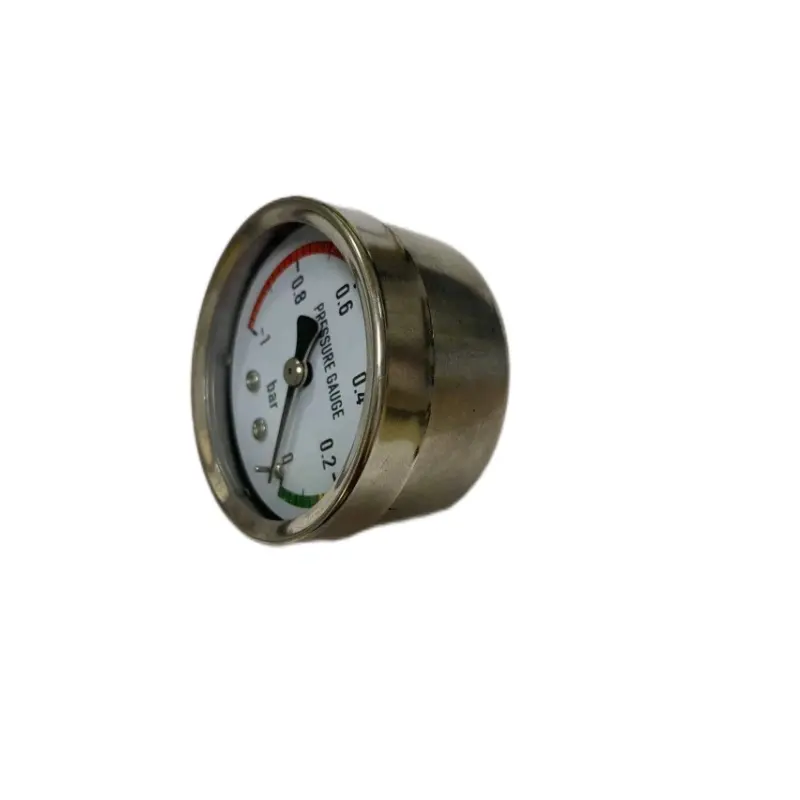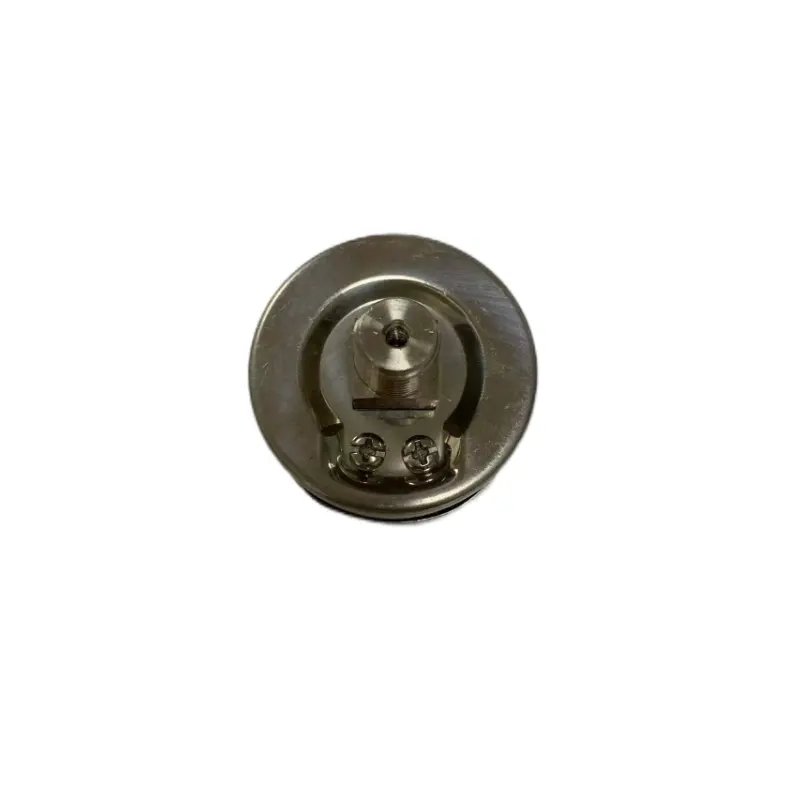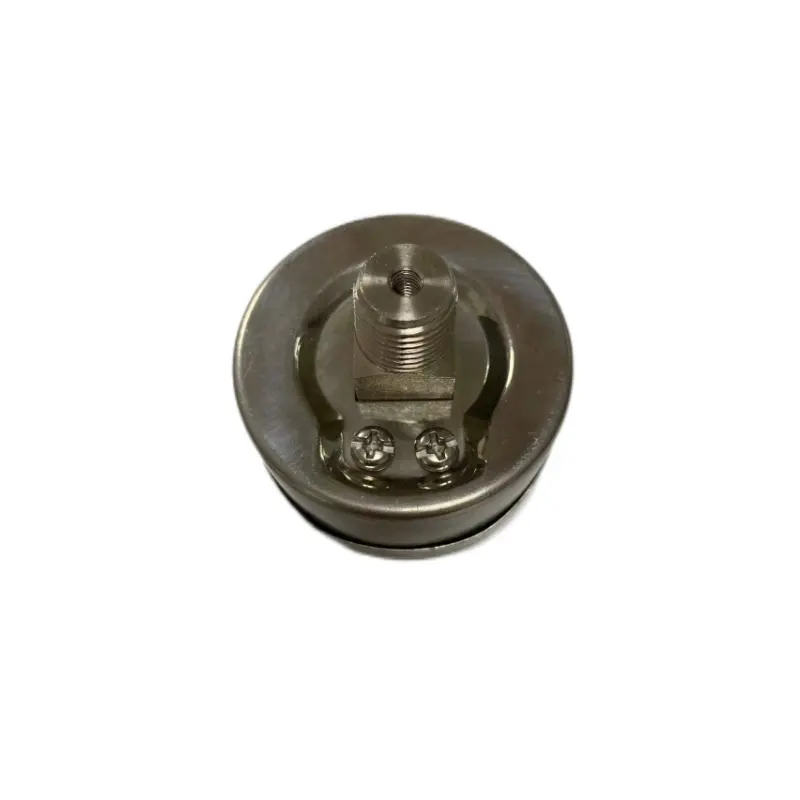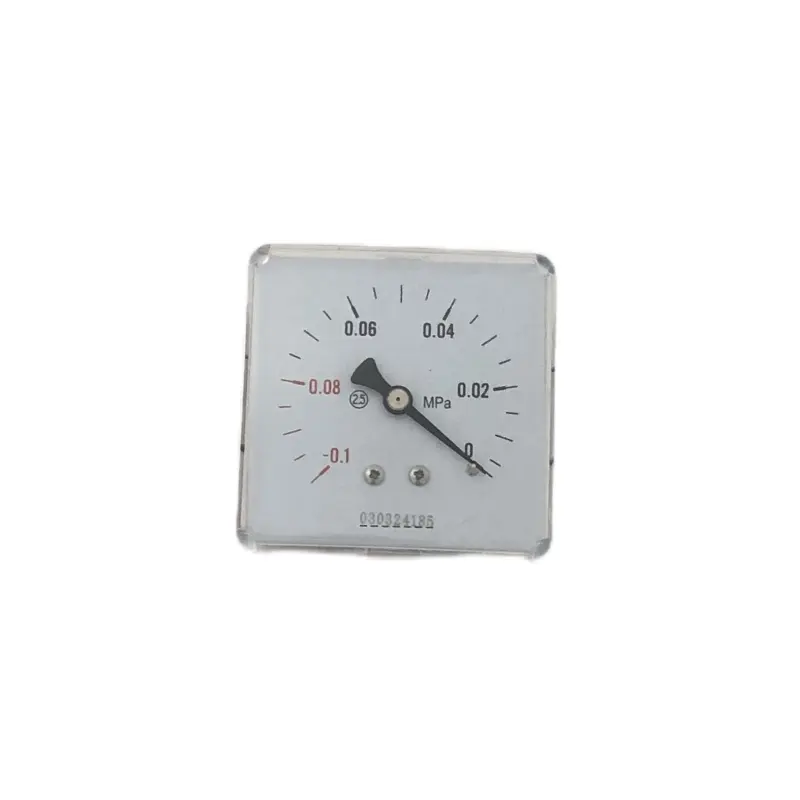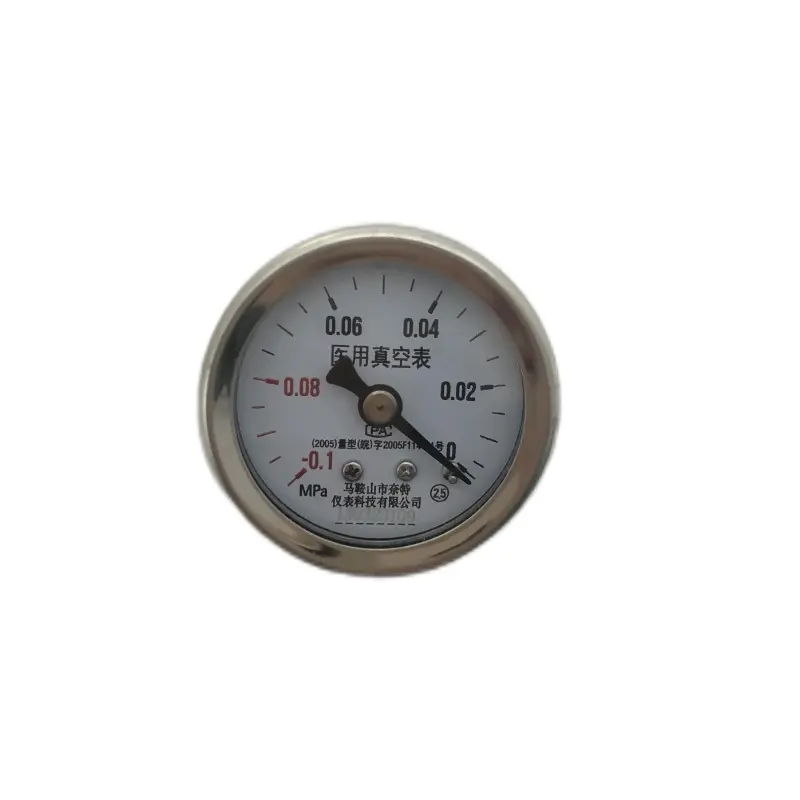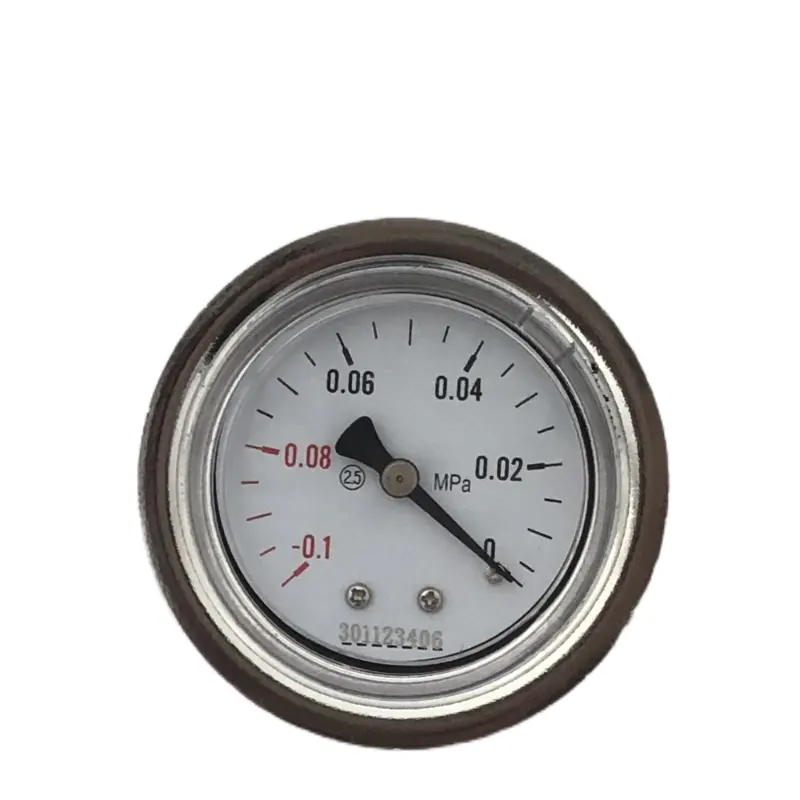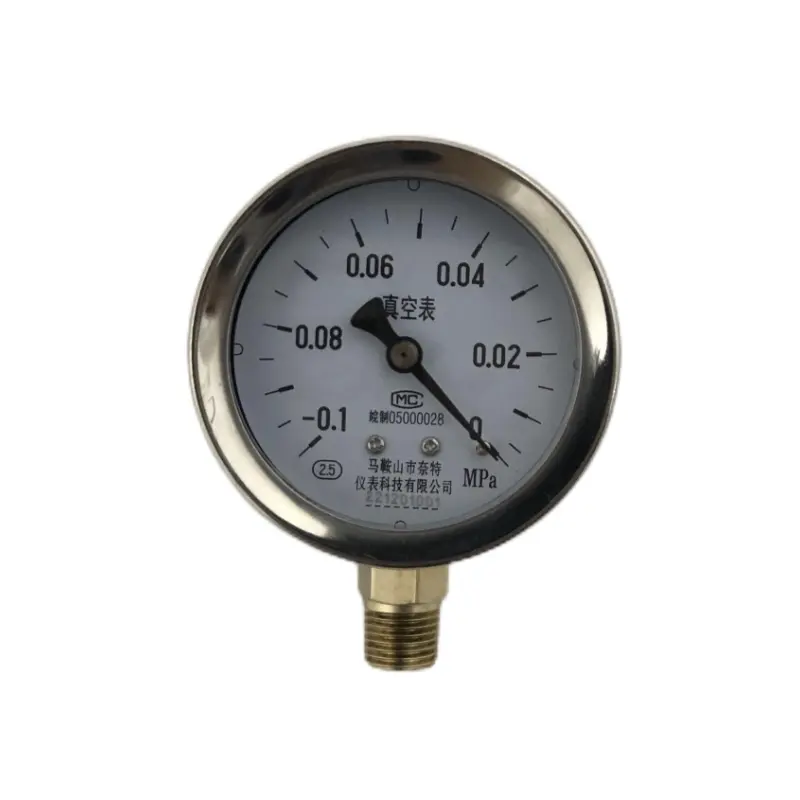| Model | Industrial stainless steel dry vacuum gauge |
| Applications | 1,A Vacuum Gauge is a pressure measuring instrument that measures pressure in a vacuum. 2, Generally, this pressure is usually below atmospheric pressure. 3,For use on air or inert gases, where negative pressure is present. 4, These can measure from 0 to full vacuum (-1bar). |
| Size(mm) | From Φ40mm Φ250mm |
| Nominal size | From Φ1.5” Φ10″ |
| Scale ranges: | -0.1MPa -0 bar,mmhg, kg/cm2 ,kPa,cmhg, inHg, pressure unit(optional) |
| Accuracy | 2.5% for Φ2″ Φ2.5” |
| Connection | 1/4” for Φ1.5” Φ2” Φ2.5″ |
| Thread | NPT, BSP, PT or gas tube |
| Wetted parts | Copper alloy |
| Case&Bezel Material | Plastic |
| Window | Polycarbonate |
| Pointer/Dial | Aluminum Finished |
| Operating Temperature | -4 F to 140 F(-20℃ to 60℃) |
| Media Temperature | 60℃ maximum |
| Filling | dry |
How to calibrate a vacuum gauge?
Prepare a standard pressure source: Select a vacuum reference source with known accuracy, such as a high-precision vacuum pump.
Connect the equipment: Connect the vacuum gauge to the standard pressure source and make sure there are no leaks.
Adjust the pressure step by step: Adjust the pressure source step by step from atmospheric pressure to low vacuum level and record the reading of the vacuum gauge.
Compare the error: Compare the vacuum gauge reading with the reading of the standard pressure source to confirm whether there is any deviation. Make corrections if necessary.


